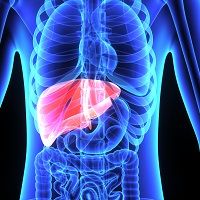Article
Hep C: The Pan-Virals Are on the Way
Author(s):
The effective arsenal of antivirals for hepatitis C just keeps getting bigger and better. Speaking at the American College of Gastroenterology meeting in Honolulu, experts are anticipating new drugs that will work for all six hepatitis virus genotypes. Meanwhile, matching patients to drugs can be complicated.

With the ever-growing arsenal of antivirals to cure hepatitis C infection, physicians still have to be mindful of which of the six hepatitis virus genotypes their patient has. No drug work for all genotypes.
That could change next year. The pan-virals are coming.
Speaking at a symposium on treatments for hepatitis C at the American College of Gastroenterology Annual Scientific Meeting in Honolulu Oct 18, Mitchell Shiffman, MD, director of the Liver Institute of Virginia, Bon Secours Health System, Richmond, VA, said the newest drug candidates are expected to work on all genotypes of the virus.
The drugs include Merck’s grazoprevir and elbasvir, to be given as a fixed dose combo. Shiffman said FDA approval is expected by the middle of 2016. Gilead’s combo of sofosbuvir and velpatasvir is also expected to debut, he said.
There are currently more than a dozen antivirals approved for hepatitis C, several of them combos, and sorting out which ones work best for which patients is complicated.
Physicians also need to pay close attention to potential drug-drug reactions, he said. Dangerous interactions include anti-seizure drugs, some antimicrobials, some HIV drugs, antifungals, immunosuppressive drugs, and even some oral contraceptives.
Patients whose co-morbidities include heart disease should not take the antivirals in combination with amiodarone, he said. “Consult with the cardiologist and see if there is another [heart] drug,” he cautioned.
Herbal remedies may not even be on physicians’ radar but they can pose hazards too. St. John’s wort, for instance, interferes with the mechanisms by which some of the antivirals disrupt the virus’ ability to replicate. Even high-dose PPIs can be problematic, he said.
On Shiffman’s list of questions for patients, is whether they have cirrhosis, co-morbidities, HIV, and whether they are active drug users. Though there has been much debate on the ethics of whether to force infected patients to prove that they have not used injection drugs for a sustained period of time, Shiffman said “I am very leery of treating active drug-users.”
Another hurdle to effective treatment can be insurers that balk at the prices of the antivirals. Treatment time can also vary, with patients with a cirrhosis often needing the drugs for 24 weeks instead of the usual regimen of 12 weeks.
The prescribing picture may be complicated, but the payoff is huge, he added. “All these drugs are showing excellent sustained viral response,” he said.
2 Commerce Drive
Cranbury, NJ 08512
All rights reserved.




